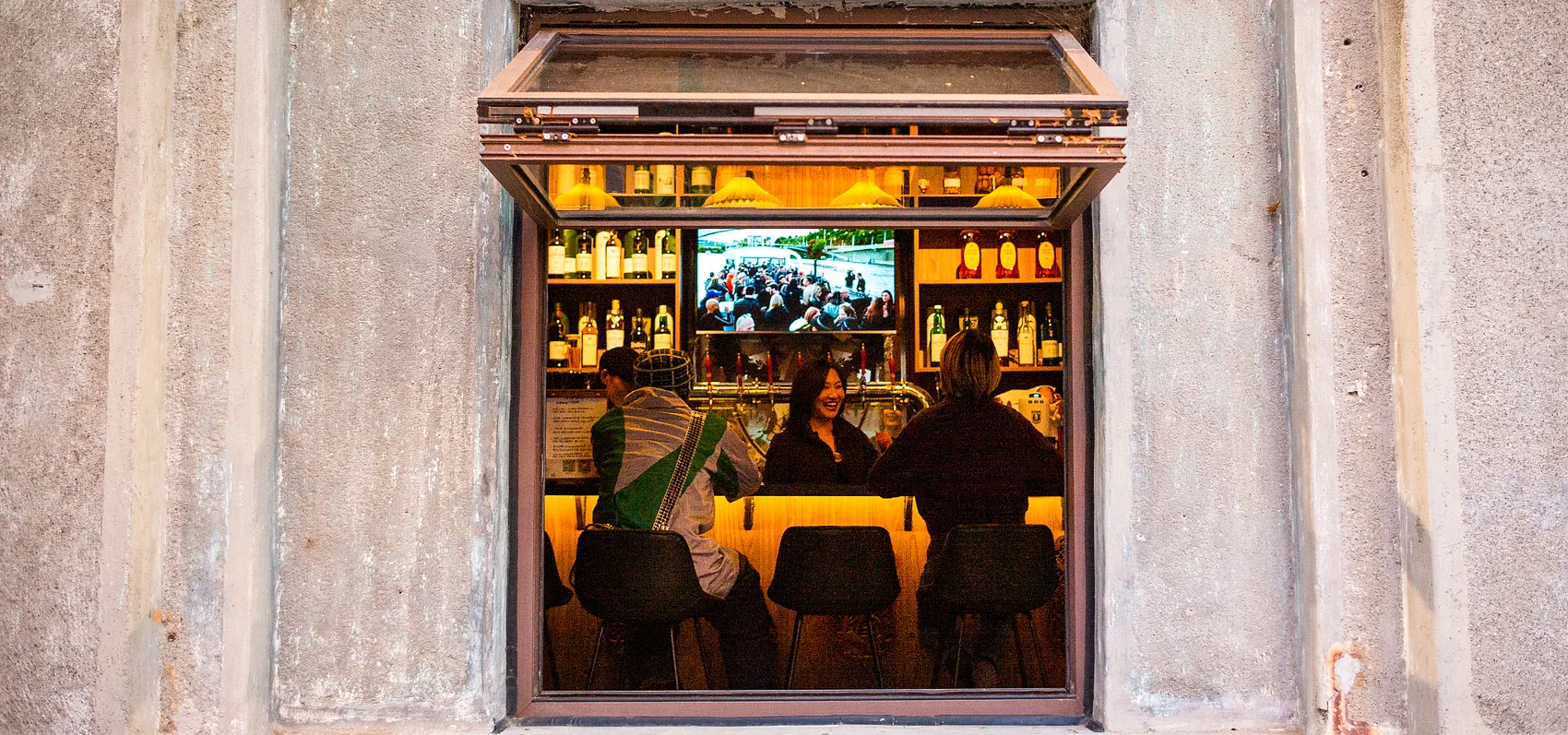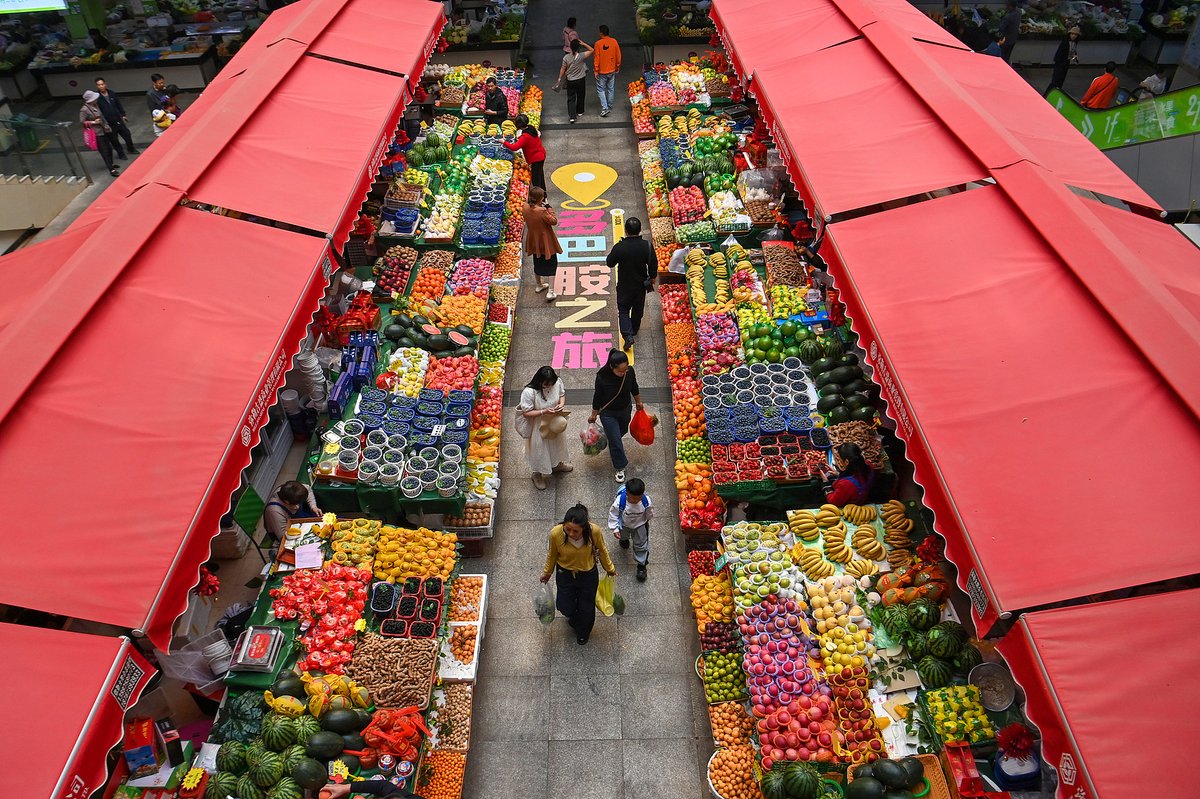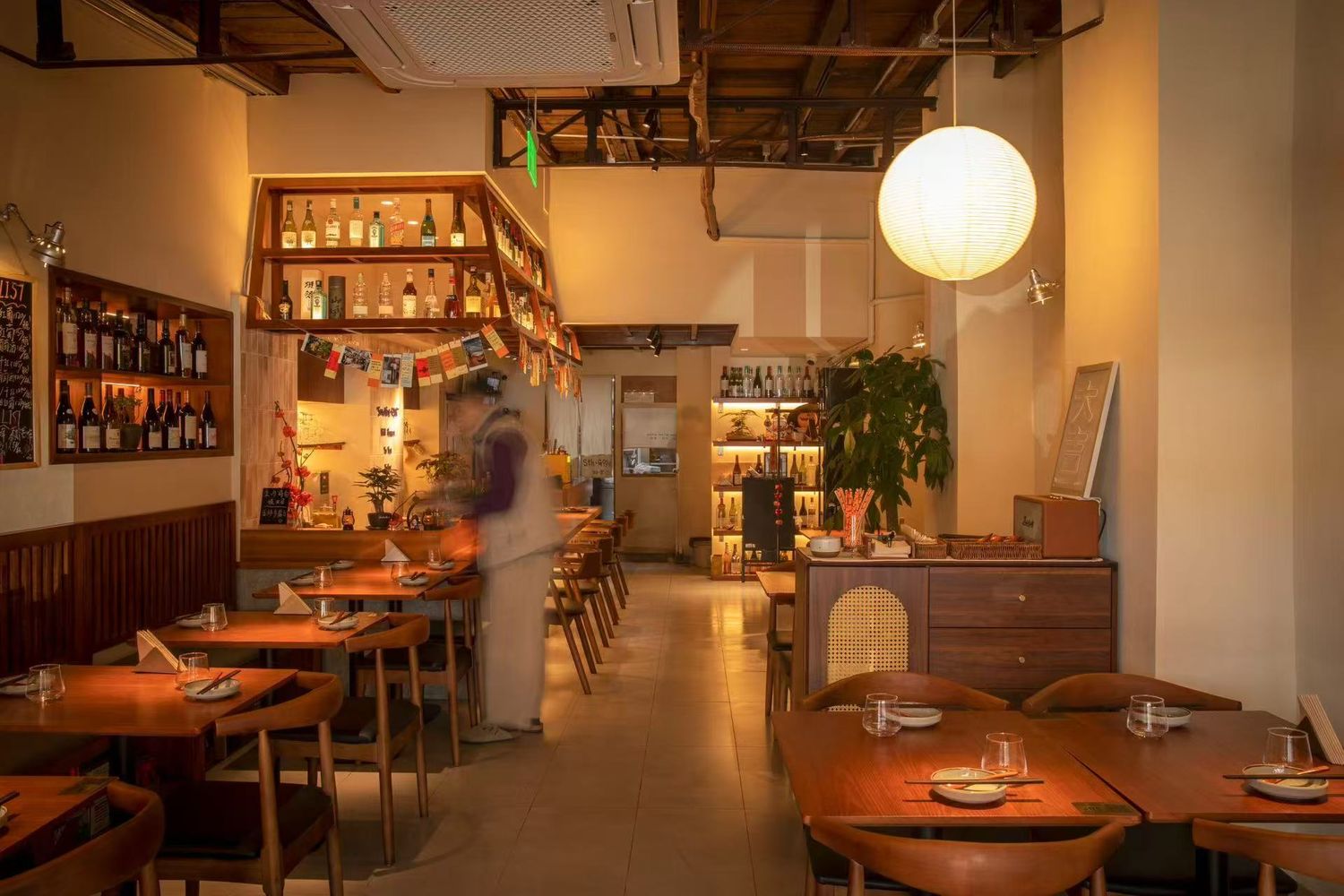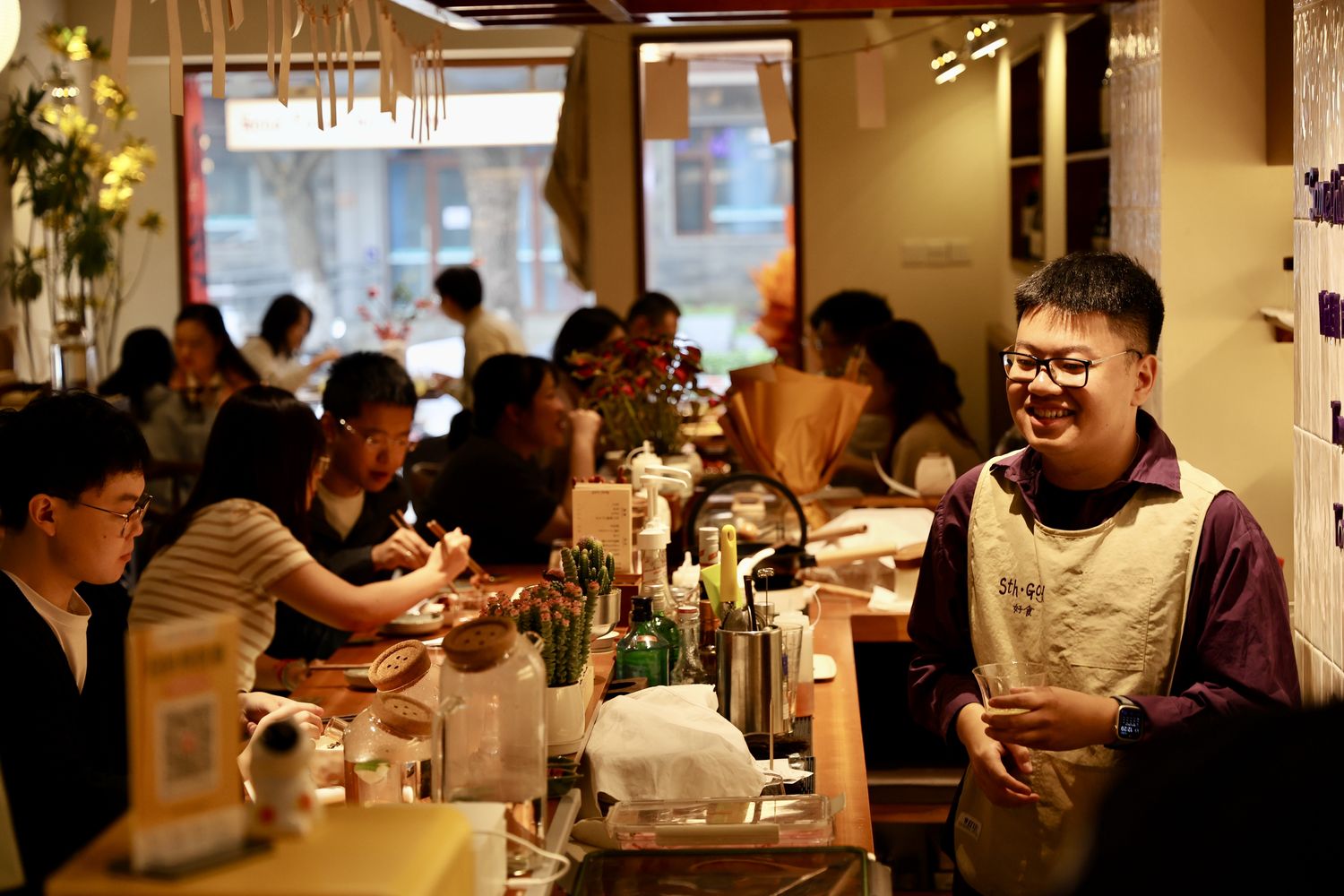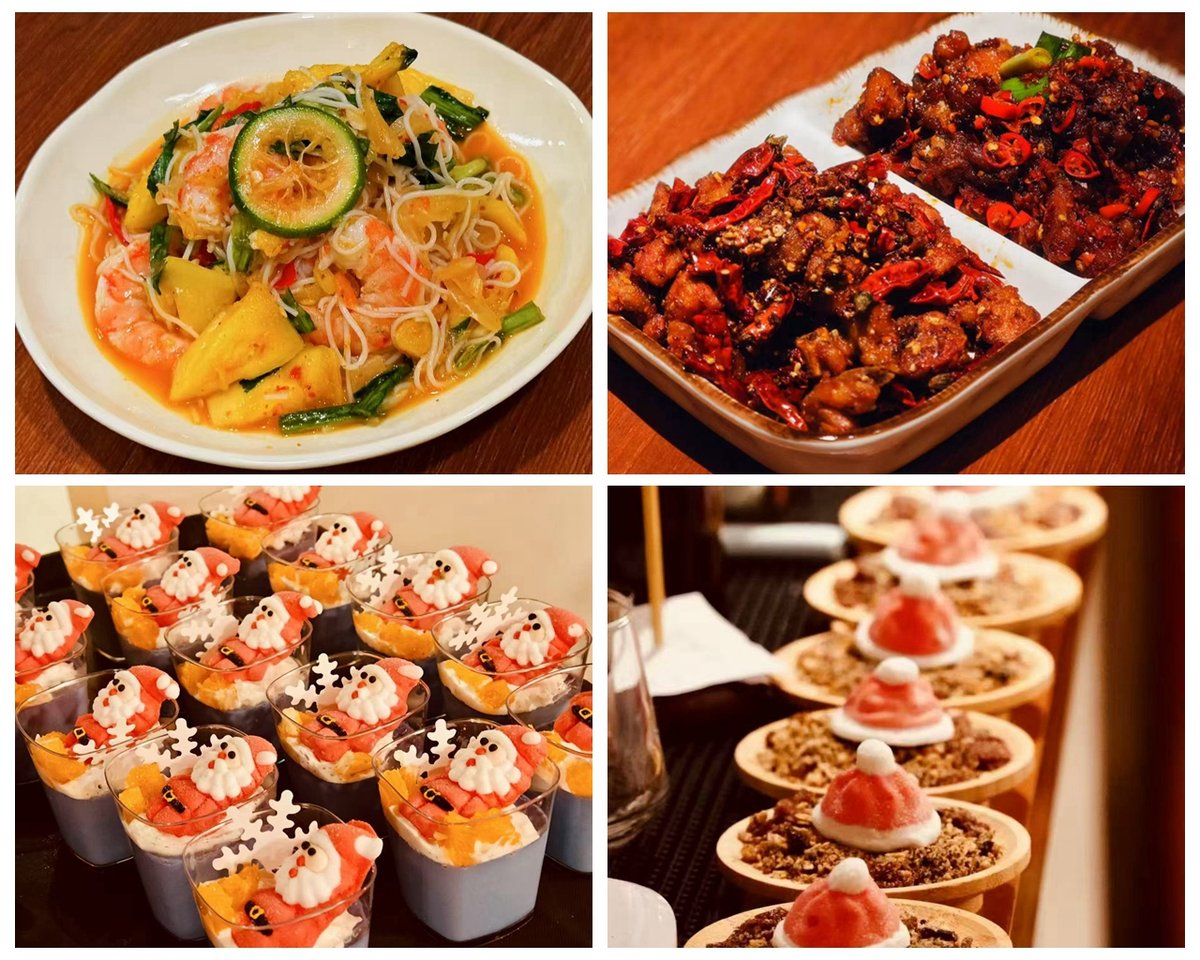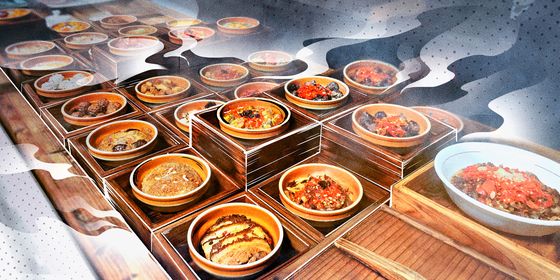Originally a casual spot in France for affordable food and drinks, bistros in China, mainly themed on southwestern cuisines, have become high-end restaurants for dating, socializing, or simply “checking in”
It is 7:30 p.m. on a Tuesday, and the wooden tables on the first floor of Sth Good restaurant in Beijing’s Dongcheng district are packed. Wine bottles line the racks and cabinets, while customers at the bar sit eye-to-eye with bartenders, as an episode of Friends plays on a projector against a blank white wall. While this may have all the trappings of a typical Western wine bar, Sth Good exclusively serves the cuisine of southwestern China’s Yunnan, Guizhou, and Sichuan provinces, with signature dishes like pig’s knuckle in sour soup, fried morel, tea-flavored chicken feet with chili pepper, and chicken stewed with bamboo mushrooms and fig.
The high-end wine bar decor and niche provincial flavors from China’s rural, mountainous southwest may seem like an unlikely pairing, but Sth Good is just one of many emerging “Yun Gui Chuan bistros” spotlighting the region’s cuisine. These restaurants are quickly gaining ground in the ever-shifting battle for Chinese bellies, though some question if the quality justifies the high prices and whether the trend is built to last.
Read more about China’s regional cuisines and culture:
- Spice It Up: Why Hunan Cuisine Is Conquering China
- Mouth of the Clouds: How Yunnan Food Thrives Around China
- Fire Down Below: The Famous Liquor-Making Town of Maotai in Guizhou
Over the past few years, the dining scene in China’s major metropolises has undergone “bistro-ification.” On the lifestyle app Xiaohongshu, the topic “bistro” has received more than 110 million views and 400,000 comments; “Shanghai bistro” has more than 27 million views.
The trend partially owes to the emerging “weixun economy (微醺经济),” literally “tipsy economy,” which began gaining momentum in 2020 as Chinese millennials increasingly embraced low-alcohol drinks in search of that ideal state between sobriety and intoxication.
In contrast with the casual restaurants in Europe that serve affordable food and drinks for the neighborhood, Chinese bistros largely target a middle- and upper-class clientele, with smart decor, high prices, and elegantly plated dishes of Western, Chinese, and other Asian cuisines. People have turned to these restaurants for a meal and drink to relieve themselves from their busy urban lives, to socialize, or to daka (打卡, “check in”) and take photos of the piaoliangfan (漂亮饭, “good-looking meals”), as they’re commonly called on social media.
Just as significant is the nationwide surge in popularity of Yunnan and Guizhou cuisines. Often decorated with natural wood and greenery to evoke the wilderness of China’s southwest, these restaurants typically include words like “mountain” or “wild” in their names and feature ingredients such as foraged mushrooms, edible herbs, and special spices like citronella and fish mint. According to a Sina News analysis, these unique flavors, novel ingredients, and rich ethnic cultures of the region—all the elements required for a regional cuisine to go viral—have made Yunnan and Guizhou food natural fits for the parallel rise of bistro dining. Sichuan cuisine, once dominant with its spicy hotpot and dishes like mapo tofu, has also been swept up in the trend thanks to its geographic and culinary proximity, as well as its enduring popularity.
The two trends are feeding off each other. The number of Yunnan and Guizhou restaurants in Beijing and Shanghai has increased from around 300 in 2019 to 1,000 in 2024, largely thanks to the development of these bistros, especially in and after 2023, according to The Rising Lab, a data research and analysis institute run by Yicai Magazine. The Rising Lab’s research also found consumers spent more than 120 yuan per person per meal on average at Shanghai’s 61 Yunnan and Guizhou bistros it surveyed, much higher than the average spend (40 to 80 yuan) at traditional restaurants that serve cuisines from the two provinces.
Having noticed these trends, the 38-year-old former engineer Zhang Juanrui moved from Shanghai back to his hometown of Beijing and joined friends in opening Sth Good Yun Gui Chuan Bistro. Zhang believes the main appeal for young people lies in these cuisines’ “heavy” hot and sour flavors and the bright colors of dishes, made with chili peppers, red sour soup, and other regional ingredients. They might become even more popular as more travelers visit the southwest and develop a taste for the local food.
But for Zhang, the decor and service at bistros are just as crucial for keeping customers coming back. “People can get tired of even the most delicious food if they have it too often,” he explains. His restaurant, for instance, tries to create a cozy atmosphere with elements like wooden tables, chairs, cabinets, and soft lighting. His customers are mainly young entrepreneurs, employees of well-known companies, and foreigners, who pair the food with white wine, cocktails, or beer.
A Beijing resident surnamed Kong, who has gained more than 192,000 fans on the microblogging platform Weibo by sharing her daily life and thoughts, including about food, says, “With their elaborate decor and furnishings, bistros offer a middle ground between fine dining and casual eateries—appealing to those who value ambiance.”
Everyone, from friends and couples to PR professionals seeking a more stylish alternative to the “old-fashioned” private rooms of traditional restaurants, can enjoy bistros. Kong was also impressed by the attentive service at some restaurants—from taking reservations (many local restaurants in China often only accept walk-ins, leading to long queues at popular spots) to staff at one bistro recognizing her by name from her phone number during a return visit.
Kong adds that she prefers hosting friends or guests at bistros rather than regular restaurants, as they offer a more comfortable setting for conversation, despite the higher cost. “You wouldn’t want to celebrate a birthday at a noisy Dongbei [northeastern] restaurant, where everything’s cooked and served from the same wok, especially if you’ve dressed up for the occasion. You can’t even take good photos,” she explains.
From Kong’s point of view, to daka and take good photos has become an essential need for many consumers. In turn, eye-catching photos of piaoliangfan (“pretty meals”)—a topic with more than 200 million views and a million comments on Xiaohongshu—have drawn more customers to these restaurants.
Ironically, the bistro has never been a symbol of fine taste in France, its birthplace, and is now falling out of favor, particularly among young people. “[Bistro is] a word only grandparents would use,” says Aladin Farré, a native Parisian now living in Beijing and host of TWOC’s Middle Earth Podcast. He explains that bistros in France aren’t ideal for dating because they’re considered too “cheap” and “not the cleanest,” with loud TVs and people betting on horse races. To him, they’re equivalent to China’s “little noodle places,” says the 36-year-old filmmaker.
Despite their elevated reputation in China, complaints about bistros—especially popular chains—have been rising. Issues such as high prices, long wait times, and poor-tasting food have surfaced, with some dishes suspected to be pre-made and packaged rather than freshly cooked.
The bistro chain Ameigo, founded in 2017, has been a particular target of netizens’ wrath. Under a Nanjing food blogger’s complaint post, which has over 400 comments, netizens—especially those claiming to be from the southwestern provinces—shared that they’ve never seen dishes like these in their hometowns. Some even accuse bistros, often run by non-southwesterners, of “westernizing” regional cuisines to capitalize on their growing popularity. Still, the chain opened nine new locations last December alone, bringing its total to more than 30 stores nationwide.
“It’s difficult to cater to all tastes,” Zhang, the co-owner of Sth Good, points out. His bistro, which mainly features traditional dishes and is staffed by a chef from Guizhou and a co-founder from Sichuan, has actually been adjusting its recipes—such as the level of spiciness in their stir-fried spicy chicken—to better suit the so-called “public taste.”
While Kong, a big fan of Yunnan and Guizhou cuisine, has no complaints about the flavor, she does take issue with the high prices and small portions at these bistros. She tells TWOC that at Spring Patio, a Yunnan bistro in Beijing’s Sanlitun area where she’s dined several times, a typical meal costs around 200 yuan per person. “Each dish is about 100 yuan, but only comes with a few slices of meat or other ingredients.”
Reports of some bistros operating at a loss, or even shutting down, have fueled speculation that the trend may be fading. The Hill, a Beijing-based Yun Gui Chuan bistro launched by hotpot giant Haidilao, lasted just nine months before quietly closing its doors last June, without offering a reason.
Zhang, however, remains optimistic about the future. Since officially opening last October, Sth Good has begun to break even and see steady growth in revenue. He believes in the bistro model: “A bistro is really both a business of drinks and food, which leaves plenty of room for creativity,” he says.





